Trees Birds Mammals Fish Amphibians Reptiles
Wild Algarve
Bookshop
Hortiboletus engelii (Hlavácek) Biketova & Wasser - Orangefoot Bolete
Phylum: Basidiomycota - Class: Agaricomycetes - Order: Boletales - Family: Boletaceae
Distribution - Taxonomic History- Etymology - Identification - Culinary Notes - Reference Sources
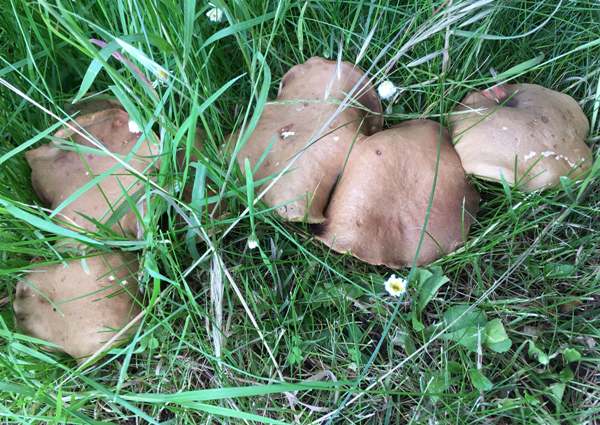
Hortiboletus engelii is one of several red-stemmed boletes that can only be separated with any real confidence by examining cross-sections and microscopic characters.
Distribution
An uncommon and very localised find in Britain, Hortiboletus engelii occurs either singly or in small trooping groups. This species is also recorded in parts of mainland Europe, but detailed distribution information is not readily available.
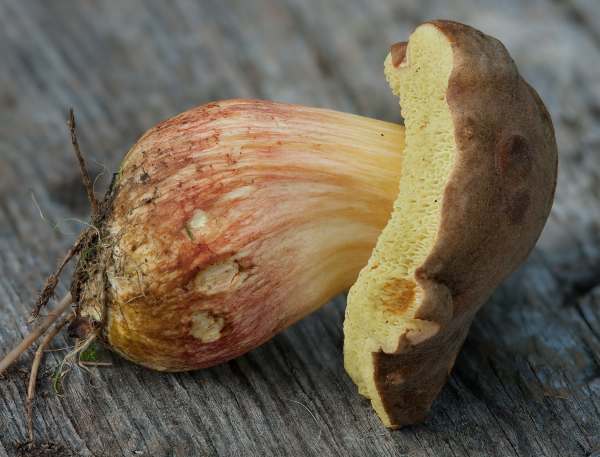
Taxonomic history
Given the name Boletus engelii in a 2001 publication by Czech mycologist Jiří Hlaváček, this bolete was transferred to the new genus Hortiboletus by Israeli mycologists Alona Yu. Biketova and Solomon P. Wasser on the basis of recent molecular (DNA) studies that indicated a need for major revision of the Boletaceae. This resulted in the current scientific name Hortiboletus engelii (Hlavácek) Biketova & Wasser.
Synonyms of Hortiboletus engelii include Boletus engelii Hlavácek, Xerocomellus engelii (Hlavácek) Šutara and Xerocomus engelii (Hlavácek) Gelardi.
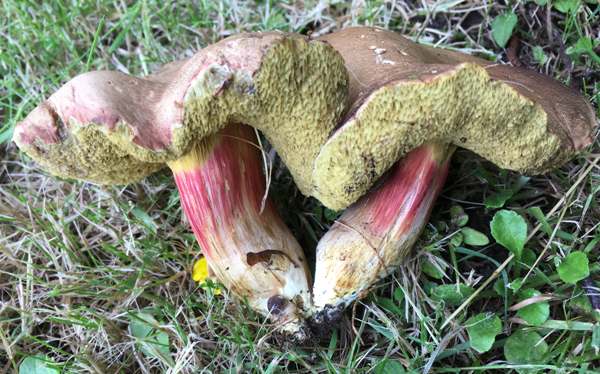
Etymology
The old generic name Boletus comes from the Greek bolos, meaning 'lump of clay', while in the new genus name the prefix Horti- comes from the Latin noun Hortus, meaning 'garden'; this is a reference to one of the main habitats in which this bolete is commonly found. The specific epithet engelii is in honour of the German mycologist Heinz Engel, who did much pioneering work on boletes in the late 20th century and had given this species the provisional name Xerocomus quercinus.
Identification guide
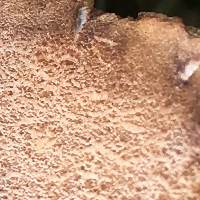 |
Cap
Caps and various shades of brown but noticeably pinkish towards the margin; ranging from 3 to 7cm across, broadly convex and then flattening; the surface is dry and finely downy, often cracking into tiny scales with pale flesh showing in the cracks.
Cap flesh is soft and very pale yellow, with a reddish purple line just below the cuticle. |
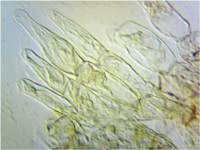 |
Cap cuticle section
The cap cuticle is a palisadoderm of heavily incrusted hyphae (like palisades, or walls of aligned pointed wooden stakes that were used as city defenses in ancient times).
|
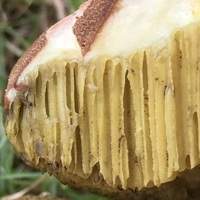 |
Tubes and Pores
The tubes are dull yellow and terminate in bright-yellow pores that become greenish and eventually orange-brown with age. Tubes to stem connection is adnate with a notch or tooth near the stem. Individual tubes are joined to one another and cannot be separated without tearing tubes open. |
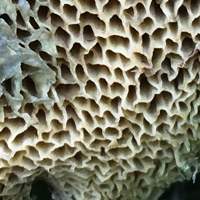 |
When bruised, the angular pores (left) slowly turn blue. |
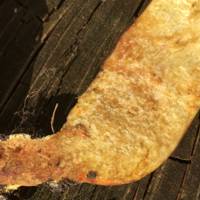 |
Stem
Stems of Hortiboletus engelii are 3 to 7cm long and 4 to 8mm in diameter, cylindrical; bright yellow at the apex, and flushed with tiny red dots or longitudinal striations in the central region, then whitish or yellowish towards the base. The stem flesh is pale yellow near the apex, becoming a deeper yellow and with tiny orange dots near the stem base. (Any blueing is usually slight and restricted to the stem apex.)
|
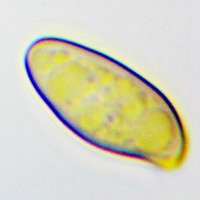 |
Spores
Subellipsoidal to fusiform, smooth; 10-13 x 5-6µm.
Spore print
Reddish-brown. |
Odour/taste |
Not distinctive. |
Habitat & Ecological role |
Hortioletus engelii is an ectomycorrhizal fungus; it is found growing on soil usually beneath oaks (Quercus species) and occasionally beeches (Fagus). |
Season |
Early July to the end of September in Britain and Ireland. |
Similar species |
Worldwide, this is one of a complex of similar species that can be separated only by microscopic analysis (and even then determination can be far from certain). In Britain and on mainland Europe it is most similar to Hortiboletus rubellus (which has a much redder cap when young and fresh) but could also be confused with Rheubarbariboletus armeniacus, a rare species that also has a reddish cap but lacks the red colouring on the stem. |
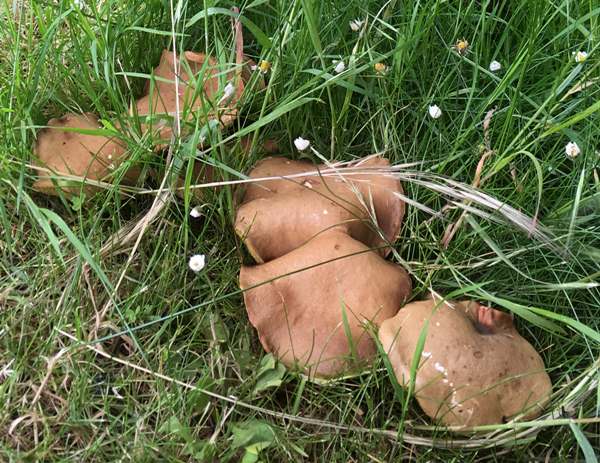
Culinary Notes
These little mushrooms are prone to maggot infestation, and because they are quite a rare find in Britain the fruitbodies are surely best left for others to enjoy.
Reference Sources
Fascinated by Fungi, 2nd Edition, Pat O'Reilly 2016, reprinted by Coch-y-bonddu Books in 2022.
British Boletes, with keys to species, Geoffrey Kibby (self published) 3rd Edition 2012
BMS List of English Names for Fungi
Roy Watling & Hills, A.E. 2005. Boletes and their allies (revised and enlarged edition), - in: Henderson, D.M., Orton, P.D. & Watling, R. [eds]. British Fungus Flora. Agarics and boleti. Vol. 1. Royal Botanic Garden, Edinburgh.
Dictionary of the Fungi; Paul M. Kirk, Paul F. Cannon, David W. Minter and J. A. Stalpers; CABI, 2008
Taxonomic history and synonym information on these pages is drawn from many sources but in particular from the British Mycological Society's GB Checklist of Fungi.
Acknowledgements
This page includes pictures kindly contributed by Simon Harding and David Kelly.
Top of page...
Fascinated by Fungi. Back by popular demand, Pat O'Reilly's best-selling 450-page hardback book is available now. The latest second edition was republished with a sparkling new cover design in September 2022 by Coch-y-Bonddu Books. Full details and copies are available from the publisher's online bookshop...